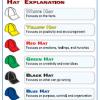|
|
Questions You Should Ask It's a technique children and teenagers have mastered: asking "why" until they get to an acceptable response (or until we're too tired to continue answering). Find out how Michele Sliger uses a similar approach designed by Six Sigma to drill down into the underlying cause of any problem within software projects. She then continues the inquisition with a series of other questions in order to find out how these problems affect business value and technology. Read on to learn what these questions are and how you can start using them to find out why things aren't going as planned. |
|
|
The Abolition of Ignorance The testing profession isn't easily mastered, and isn't something that can be perfected by practice alone. Good testers study testing to improve their knowledge of the areas they know about, but great testers strive to find out about areas of software testing they don't yet realize they don't know about. |
||
|
Lessons Learned in Close Quarters Combat Few would think that the tactics employed by military and law-enforcement Special Forces to breach buildings under siege bears any relation to software project teams. After a number of weekends training with ex-military and ex-law-enforcement Special Forces—just for fun—Antony Marcano draws a surprising parallel between the dynamics of modern Special Forces "room-clearing" methods and the dynamics of modern software development teams. |
||
|
The Key to Good Interviewing The foundation of any successful assessment is interviewing a diverse cross section of the staff. But asking the right questions and asking those questions right makes all the difference in the quality of information you can elicit from your interviewees. |
||
 |
Six Thinking Hats for Testers Fresh ideas can provoke us into discovering great insights: Six thinking hats did just that for Julian Harty, who then applied them to software testing with great success. He, and tens of others, has found the thinking hats easy to use, practical, and very productive. Read on to find out how you can apply them to your work. |
Julian Harty
November 25, 2008 |
|
What's a Manager to Do? Self-organizing teams still need managers. But those managers need to rethink how they do their jobs and consider how much self-management the team can take on. Finding the sweet spot between hands on and hands off is the key. |
||
|
A Map by Any Other Name A mapping illustrates a relationship between two things. In testing, a map might look like a road map, but it might also look like a list, a chart, a table, or a pile of stories. We can use any of these to help us think about test coverage. |
||
|
|
Don't Fear the Repartee Conflict reduces people's productivity and generosity toward the organization and their coworkers. These four steps can help defuse a conflict situation and improve the chances for a solution that at the least, both parties can live with. |
|
|
|
Train Wreck Spotting An oft-overlooked goal of encapsulation is to simplify usage. Without this sensibility, classes can end up with simplistic interfaces and callers can end up with method-call pile-ups. |
|
|
Metrics that Motivate To implement a meaningful incentive system for your team, you need to select metrics that encourage the behaviors you need and the results you want. But first you have to decide what you need and want. |
Pages
Upcoming Events
| Jun 02 |
AI Con USA Bridging Minds and Machines |
| Sep 22 |
STARWEST Software Testing Conference in Anaheim & Online |
| Oct 13 |
Agile + DevOps USA The Conference for Agile and DevOps Professionals |
Recommended Web Seminars
| May 23 | How Generative AI Boosts Speed and Quality in Software Testing |
| On Demand | Building Confidence in Your Automation |
| On Demand | Leveraging Open Source Tools for DevSecOps |
| On Demand | Five Reasons Why Agile Isn't Working |
| On Demand | Building a Stellar Team |












